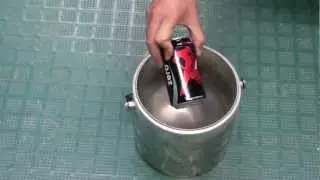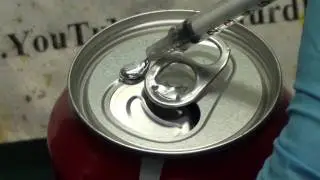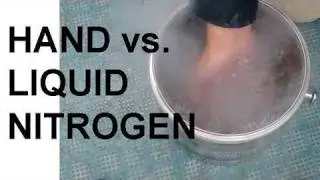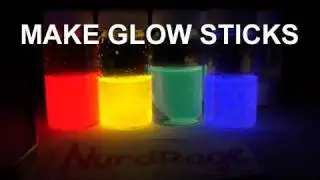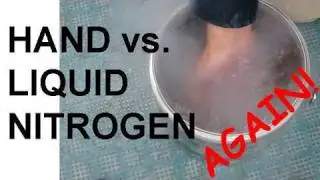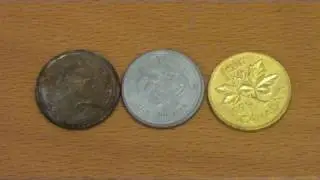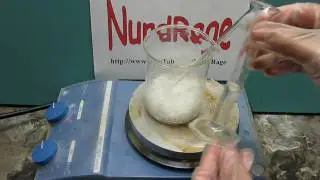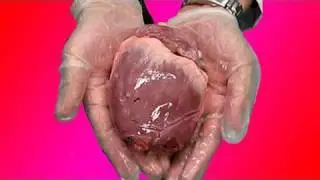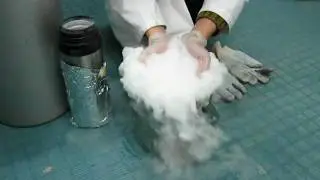Make Luminol - The Complete Guide
In this video we make luminol from domestically available chemicals.
The process pretty complicated and dangerous at parts and so should only performed by, or under the direct supervision of, an experienced chemist.
First we obtain diethylhexyl phthalate by refluxing 50g of finely cut vinyl gloves in enough isopropanol to completely cover them for at least one hour, preferably three to four.
The alcohol solution of diethylhexyl phthalate is filtered and the supernatant is boiled until it reduces to half its volume. An equal amount of water along with 10g of sodium hydroxide is added and the mixture boiled for an hour. This causes the diethylhexyl phthalate to hydrolyze into phthalic acid and 2-ethylhexanol. After the solution cools it will phase separate into an aqueous layer containing disodium phthalate and an organic layer containing the alcohols.
Retaining just the aqueous layer, 25mL of 12 molar hydrochloric acid is added to precipitate the phthalic acid. Chilling may be necessary. The supernatant is discarded and the residue of wet phthalic acid is purified and converted into phthalic anhydride by heating it to 300 Celsius. First the water boils off and then the phthalic anhydride evaporates and condenses on the sides of the beaker. At this point a flask of cold water is placed over the beaker to allow the phthalic anhydride to deposit on it. Periodically the phthalic anhydride deposits are harvested until no more can be obtained.
45mL of sulfuric acid along with 13g phthalic anhydride and 19g of sodium nitrate are stirred together with the temperature slowly ramped up to 110 celsius. Once the temperature is reached the reaction is held for one hour to nitrate the phthalic anhydride to 3-nitrophthalic anhydride. Heating is then removed and the mixture allowed to cool back to room temperature. The gelled mixture is then transferred into 150mL of ice-cold water and vigorously stirred until all the chunks are broken up and nitrogen dioxide gas is no longer produced. Then the mixture is allowed to settle overnight. Then it is vacuum filtered and washed with two 50mL portions of water and allowed to dry under the forced air stream.
1g of the 3-nitrophthalic acid is combined with 616mg hydrazine sulfate and 1.4 sodium acetate trihydrate and 1mL of water. The mixture is boiled with a heat gun until dry. Then 4mL of polyethylene glycol (dot 3 brake fluid) with a boiling point higher than 230 celsius is added. The mixture is heated to 220 Celsius for ten minutes.
The mixture is allowed to cool to below 80 Celsius and then transferred into a large beaker with 100mL of water. 10g sodium hydroxide and 13g sodium metabisulfite are dissolved into the mixture. 5g of torn aluminum foil is then jammed into the beaker and held down with a flask while another flask of cold water is placed on top. Vigorous hydrogen evolution and self-heating will occur as the aluminum foil reacts. The mixture is allowed to reflux until it stops on its own. Additional aluminum foil is added and the process repeated until the mixture has no further change in color.
The mixture is filtered and the residue washed with an additional 50mL of water. The filtrate is then separated from any floating organic products. In a separate container a solution of 200mL of water and 25g of sodium bisulfate is prepared. 100mL of acetone is added and the filtrate is directly added to the mixture with vigorous stirring. Stirring is continued until there is no further change in the consistency or volume of the slurry. The supernatant is decanted off and allowed to evaporate.
The cake of luminol is mixed with 100mL of water and thoroughly washed to remove any remaining salts. The mixture is vacuum filtered and allowed to dry.
The Luminol can be tested by reacting an alkaline solution of it with bleach.








